Ryze Tello Development
Earlier this month I purchased the Ryze Tello, which is low-cost drone (£99) that includes DJI Flight Technology and an Intel Image Processor for photos and video.
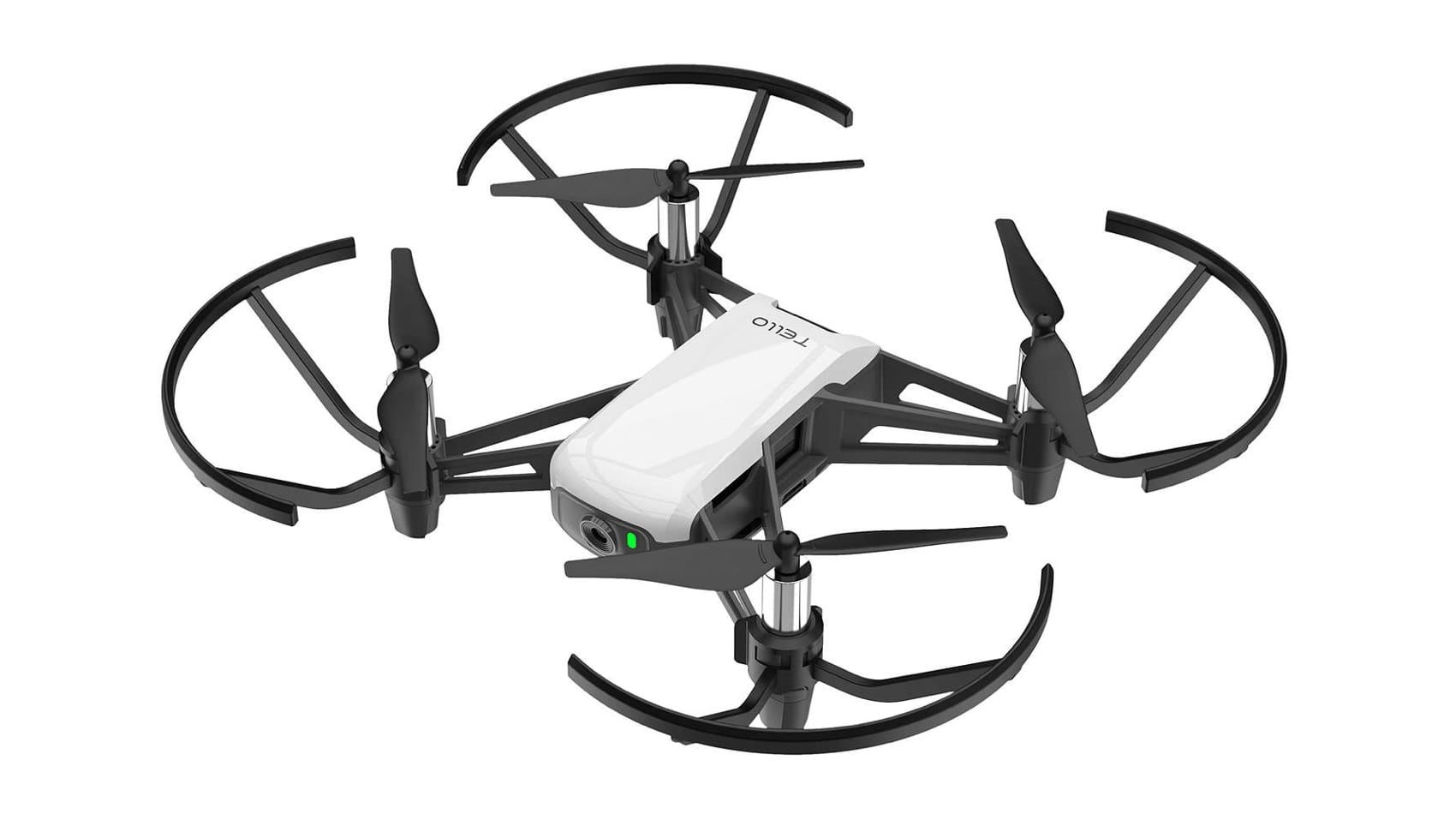
I have previously used the DJI Mavic Pro, which is a serious drone, at a serious price (£899). Although the Tello is obviously no match for the Mavic Pro, it definitely punches above its weight (and price).
The Tello is incredibly small, very well built and boasts an impressive specification. If you are familiar with DJI drones, the Tello looks like a smaller version of the DJI Spark (£449), with similar build quality.
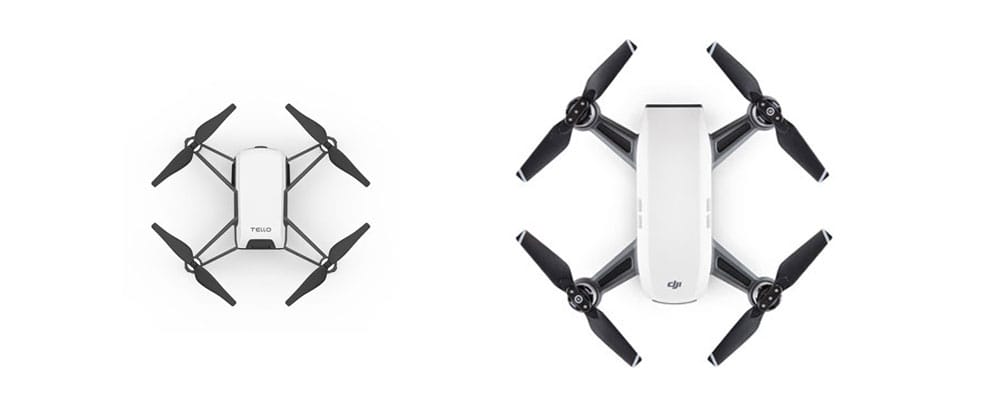
The full specification of the Tello can be found below:
- Weight: 80g
- Dimensions: 98×92.5×41mm
- Propellers: 3inches
- Functions: Range Finder, Barometer, Vision System, Wi-Fi
- Camera: 5MP (2592x1936), 720p 30FPS
- Battery: 1.1Ah/3.8V
- Flight Distance: 100m
- Flight Speed: 8m/s
- Flight Time: 13min
- Flight Height: 10m
Considering the price, the Tello includes an impressive number of features, which are usually reserved for high-end drones:
- iOS/Android App
- Bluetooth Controller Compatibility
- VR Headset Compatibility
- Electronic Image Stabilisation Video
- Auto Takeoff/Landing
- Low Battery Protection
- Failsafe Protection (Auto Land)
- Collision Detection
- Vision Positioning System (Stabilisation)
- Auto Flight Modes (Throw and Go, 8D Flips)
The Tello is great fun to fly and thanks to the Vision Positioning System, is incredibly stable for a drone for its size (either inside or outside).
It also supports Scratch, which is an MIT-developed visual coding system that aims to help anyone learn the basics of programming.
Programming autonomous routines for the Tello is great fun, however, does require some setup.
Getting Started with Scratch Development
These instructions were written for macOS, but should also work for Windows.
-
Download and install Adobe Air.
-
Download and install the Scratch 2.0 Offline Editor.
-
Download an install node.js.
-
Download and unzip the “Tello.js” and “Tello.s2e” configuration files.
-
Open “Terminal” (or Command Prompt), navigate to the folder location that includes the “Tello.js” file and run the command
node Tello.js.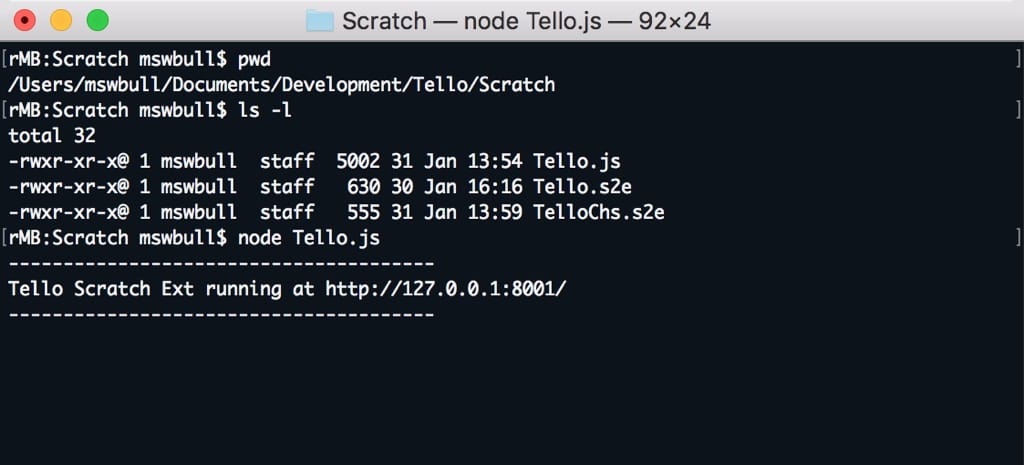
-
Open Scratch and whilst holding the “Shift” key, click “File > Import Experimental HTTP Extension”. Select the previously downloaded “Tello.s2e” file.
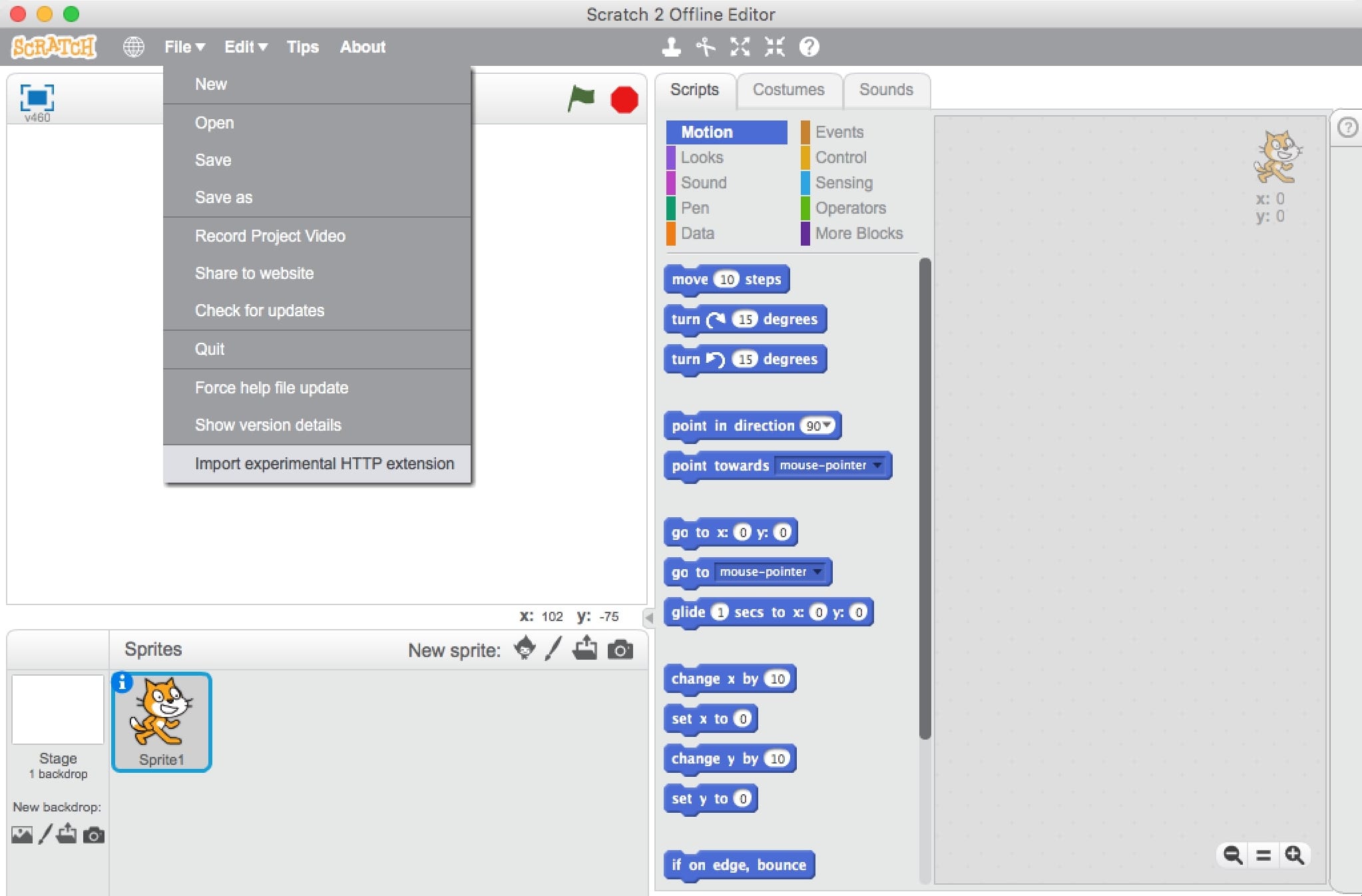
-
All Tello development blocks will be found under “More Blocks”.
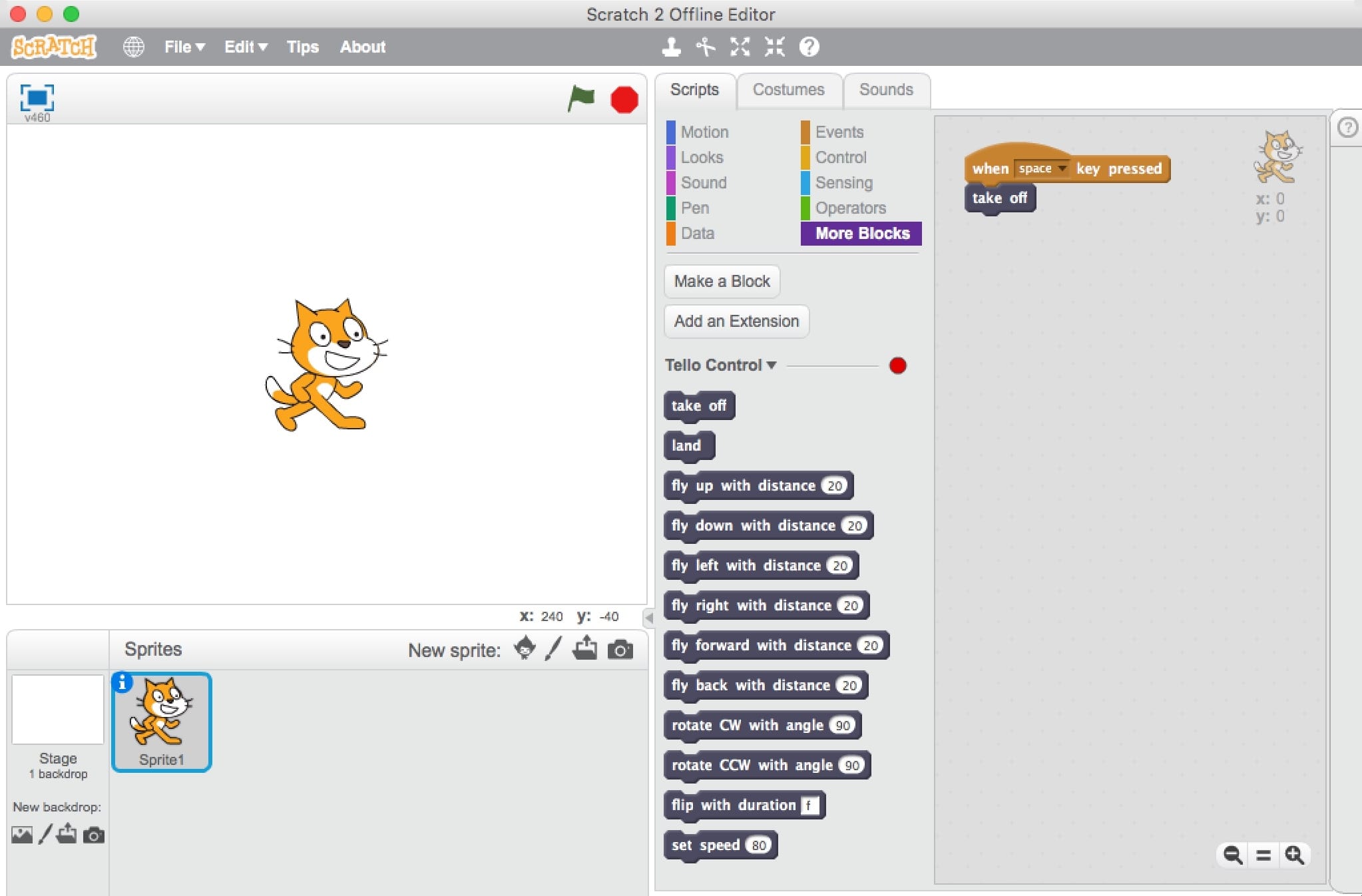
-
Connect to your Tello via Wifi, similar to what you would do with your iOS or Android device.
You are now ready to run your program, using an event (when space key pressed) programmed in Scratch.